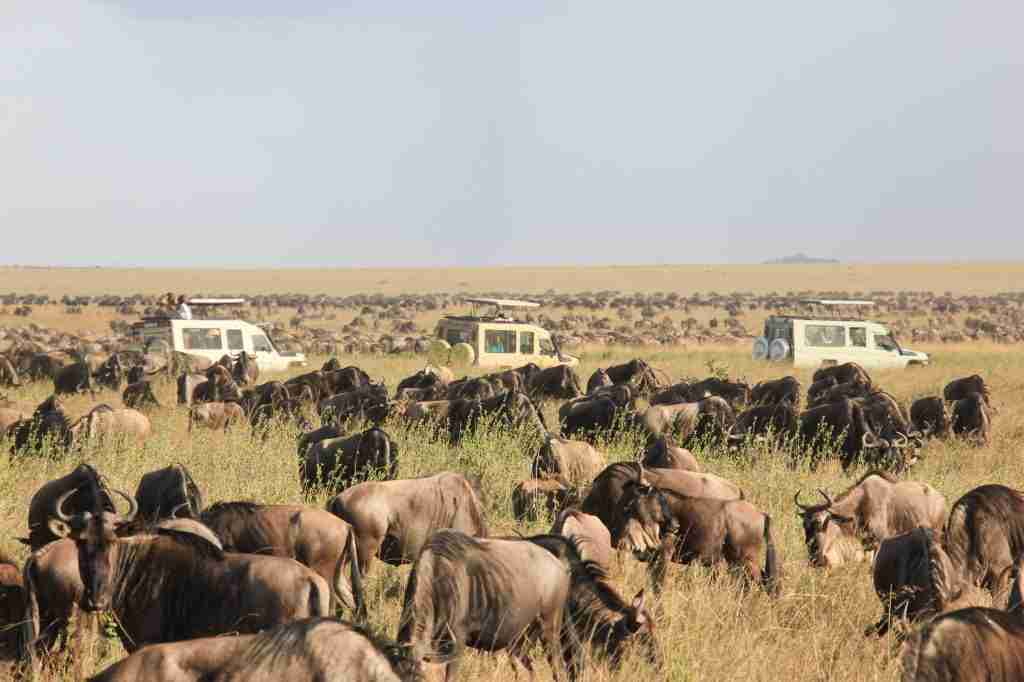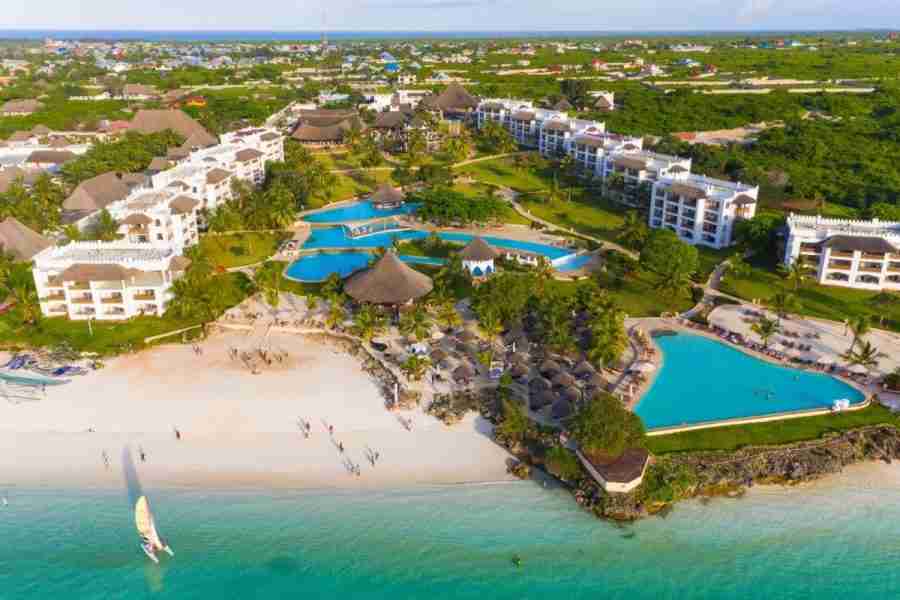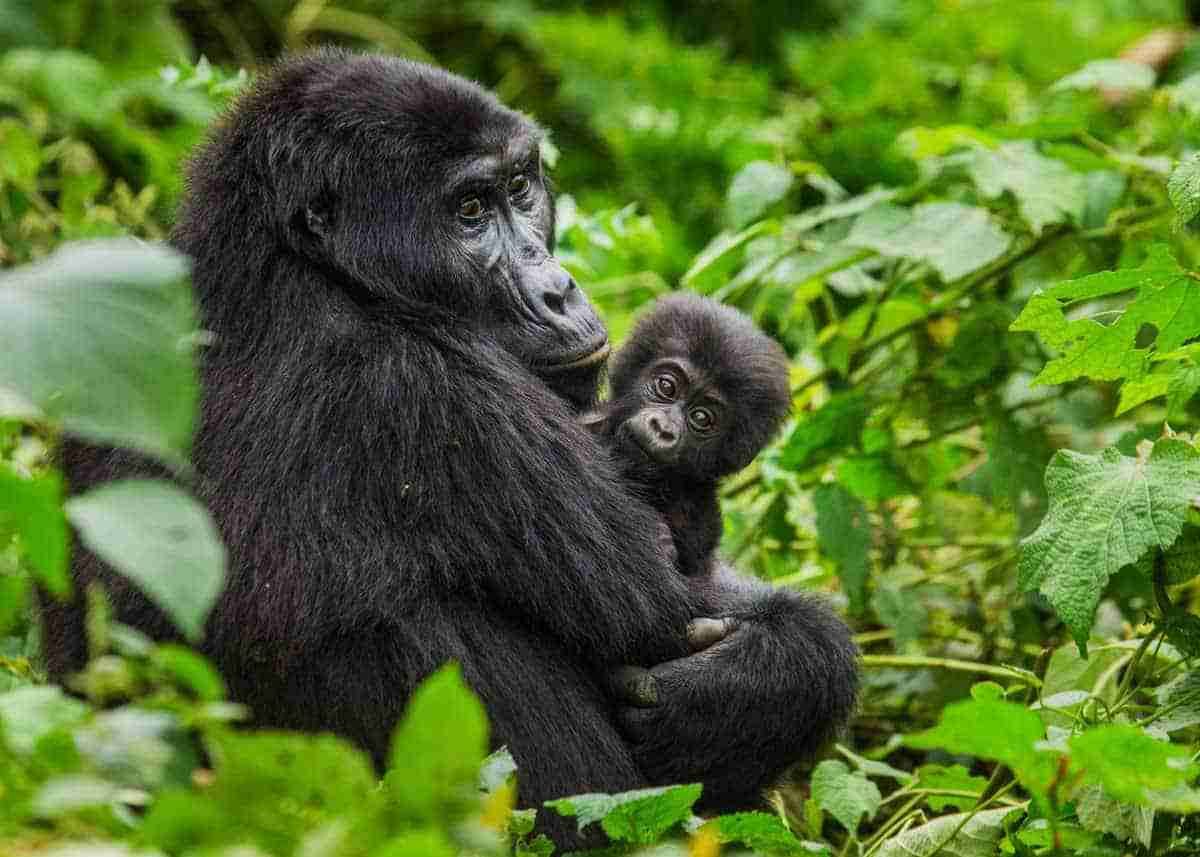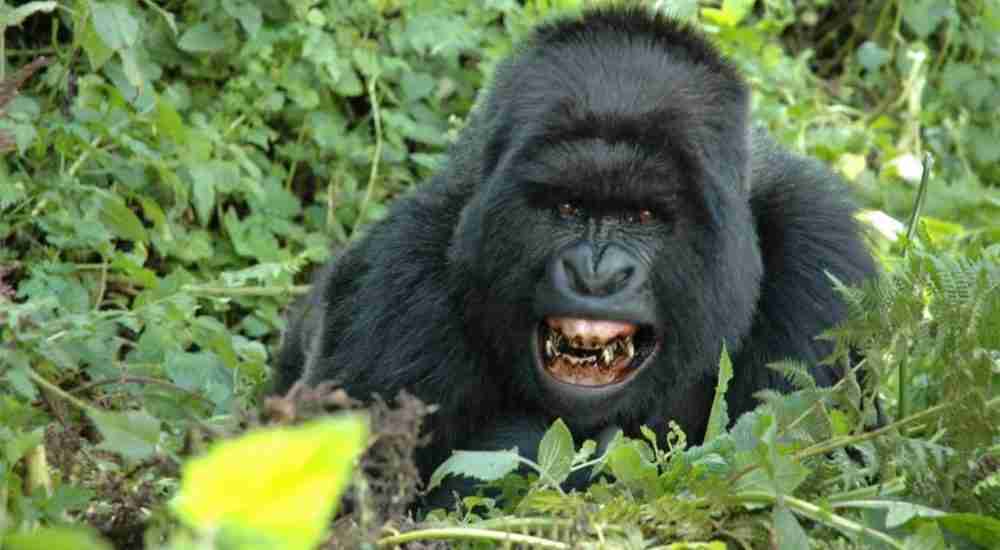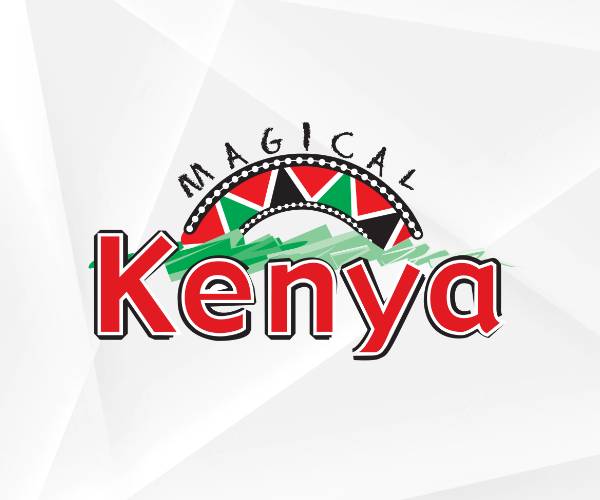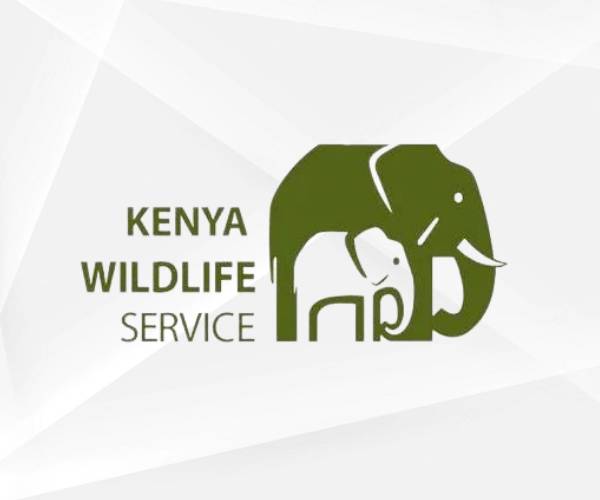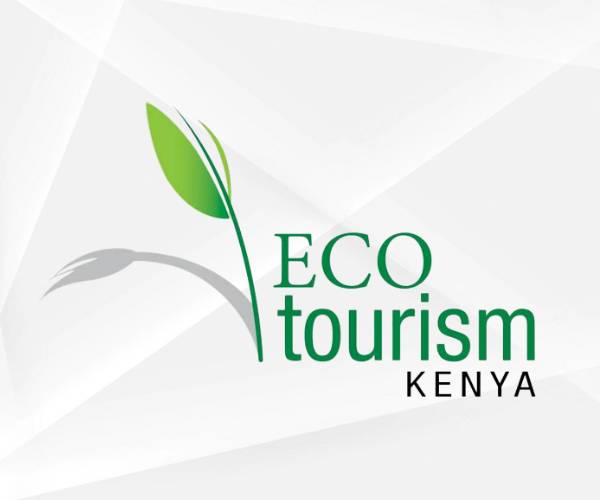When is the best time to visit Kenya?
The best time to visit Kenya is during the Dry season from late June to October (these are the best wildlife viewing months). The wildebeest migration usually reaches the Masai Mara in August and remains until October when they move back to the Serengeti in Tanzania. Wildlife viewing is good year-round, but this can differ for some parks. See below to learn when to visit which park.
Read more:
- Explore our best Kenya safaris
- View Kenya destination guide
- Kenya Evisa / ETA
Visiting Kenya in January
The height of summer is an excellent time to spot wildlife, both on the ground and in the air. Temperatures are hot but there will be the odd shower to cool things down, while the landscape is lush with long grass from the ‘short rains’ that fall in November and December. Down on the coast, the days are hot and sunny and the sea is at its clearest.
Kenya in January offers a perfect blend of wildlife, culture, and adventure, making it an ideal destination for travelers seeking a memorable experience.
Visiting Kenya in February
Another great month for spotting wildlife, both on the ground and in the air. Temperatures remain high and the odd shower may fall, while there should still be long grass covering the landscape from the ‘short rains’ that fall in November and December.
Visiting Kenya in March
The weather gets wetter as Kenya approaches the ‘long rains’, but game viewing is still good.
Visiting Kenya in April
The ‘long rains’ of April and May can turn the tracks through the parks into quagmires and make the beaches along the Indian Ocean coastline hot and very wet, so this isn’t the best time to travel.
Visiting Kenya in May
The ‘long rains’ of April and May can turn the tracks through the parks into quagmires and the beaches along the Indian Ocean coastline hot and very wet, so this isn’t the best time to travel.
Visiting Kenya in June
The rains have finished for the most part, although some light showers are still possible, and the nights can be cool at altitude. The long dry season is on the horizon, and while grasses are high, making game harder to spot at times, it is a beautiful time to visit. People start anticipating the arrival of the Great Migration into the Masai Mara.
Visiting Kenya in July
The weather is temperate and dry but not too dusty, with occasional showers still possible, making this a good time to visit overall. The first herds arrive into the Masai Mara from Tanzania and peak travel and game viewing season is just around the corner.
Visiting Kenya in August
The temperatures are pleasant and it’s mostly dry, making it one of the peak times to visit. Fantastic game viewing can be enjoyed now, with the Great Migration at its height in the Masai Mara providing lots of action at the river crossings as countless wildebeest and zebra gather and cross the Mara and Talek Rivers.
Visiting Kenya in September
The weather is generally dry. The game viewing action continues in the Mara, and it is still excellent throughout Kenya for wildlife.
Visiting Kenya in October
As the mercury slowly starts to rise, a few showers are possible. However, it’s a lovely time to travel if you want to avoid the crowds but still have excellent game viewing opportunities. The migratory herds are leaving the Mara now, but excellent resident populations remain. All other Kenya destinations are great at this time of year.
Visiting Kenya in November
The short rains are starting and the temperature is hotter, but the Mara, along with most other destinations, remains open. However, on the Laikipia Plateau many camps are closed. There is still good game viewing under the heavier skies and activities continue. Crowds dissipate and you can often make the most of some good deals.
Visiting Kenya in December
The end of the year can be hot and potentially wet — it’s the middle of the short rains, with some camps closed (particularly in the north) and some open. Where camps are open, wildlife viewing remains very good, with high bird numbers present.
Best Things to do in Kenya:
Kenya is a diverse and vibrant destination offering a wide range of activities and experiences for travelers. From wildlife safaris and stunning landscapes to rich cultural heritage and beautiful beaches, here are some of the best things to do in Kenya:
1. Go on a Safari
Kenya is one of the most iconic safari destinations in the world, offering unparalleled wildlife experiences, stunning landscapes, and rich cultural heritage. Whether you’re a first-time visitor or a seasoned safari-goer, Kenya’s diverse ecosystems and abundant wildlife make it a must-visit destination.
Why Choose Kenya for a Safari?
- The Great Migration: Witness one of nature’s greatest spectacles in the Maasai Mara (July–October).
- Big Five: Kenya is home to lions, leopards, elephants, buffaloes, and rhinos.
- Diverse Landscapes: From savannahs and mountains to forests, lakes, and coastal beaches.
- Cultural Experiences: Interact with local communities like the Maasai and Samburu.
- Conservation Success: Kenya is a leader in wildlife conservation, with many conservancies and national parks protecting endangered species.
Best Kenya safari destinations – wildlife parks, game reserves, private conservancies, mountains, lakes, monuments e.t.c.
Maasai Mara National Reserve
Highlights: Famous for the Great Migration (July-October), the Maasai Mara is home to the Big Five (lion, leopard, elephant, buffalo, and rhino) and offers some of the best wildlife viewing in Africa.
Activities: Game drives, hot air balloon safaris, cultural visits to Maasai villages.
Amboseli National Park
Highlights: Known for its large herds of elephants and stunning views of Mount Kilimanjaro. The park also hosts a variety of other wildlife, including lions, cheetahs, and giraffes.
Activities: Game drives, bird watching, photography.
Tsavo East and Tsavo West National Parks
Highlights: Together, these parks form one of the largest wildlife sanctuaries in the world. Tsavo East is known for its vast open plains and the Yatta Plateau, while Tsavo West features more varied landscapes, including volcanic hills, springs, and lava flows.
Activities: Game drives, visiting Mzima Springs, bird watching, and exploring the Shetani Lava Flows.
Samburu National Reserve
Highlights: Located in the semi-arid region of northern Kenya, Samburu is home to unique species such as the Grevy’s zebra, Somali ostrich, and reticulated giraffe. It also hosts elephants, lions, and leopards.
Activities: Game drives, cultural visits to Samburu villages, bird watching.
Lake Nakuru National Park
Highlights: Famous for its flamingos and rhino sanctuary, Lake Nakuru is also home to lions, leopards, and a variety of bird species. The park’s alkaline lake attracts thousands of flamingos, creating a stunning pink hue.
Activities: Game drives, bird watching, photography.
Nairobi National Park
Highlights: Located just outside Kenya’s capital city, Nairobi National Park offers a unique opportunity to see wildlife with a city skyline in the background. The park is home to lions, giraffes, rhinos, and a variety of bird species.
Activities: Game drives, visiting the David Sheldrick Wildlife Trust and Giraffe Centre.
Aberdare National Park
Highlights: Known for its lush forests, waterfalls, and diverse wildlife, including elephants, leopards, and rare bongo antelopes. The park offers a different safari experience compared to the savannah parks.
Activities: Game drives, hiking, bird watching, staying in tree lodges.
Meru National Park
Highlights: This park is less visited but offers a rich wildlife experience, including elephants, lions, leopards, and cheetahs. It is also known for its scenic landscapes, including rivers, swamps, and wooded grasslands.
Activities: Game drives, bird watching, visiting the grave of Elsa the lioness (from “Born Free”).
Ol Pejeta Conservancy
Highlights: A leading wildlife conservancy that is home to the last two remaining northern white rhinos. The conservancy also hosts a variety of other wildlife, including lions, elephants, and chimpanzees.
Activities: Game drives, visiting the chimpanzee sanctuary, rhino tracking, night game drives.
Hell’s Gate National Park
Highlights: Known for its dramatic scenery, including towering cliffs, gorges, and geothermal activity. The park is home to a variety of wildlife, including buffalo, zebras, and giraffes.
Activities: Hiking, cycling, rock climbing, bird watching.
Mount Kenya National Park
Highlights: While primarily known for its trekking opportunities, Mount Kenya National Park also offers wildlife viewing, including elephants, buffalo, and various antelope species. The park’s diverse ecosystems range from montane forests to alpine meadows.
Activities: Trekking, game drives, bird watching.
Shimba Hills National Reserve
Highlights: Located near the coast, Shimba Hills is known for its lush greenery and wildlife, including elephants, giraffes, and the rare sable antelope. The reserve also offers stunning views of the Indian Ocean.
Activities: Game drives, hiking, visiting Sheldrick Falls.
Lewa Wildlife Conservancy
Location: Laikipia County
Highlights: Known for its successful rhino conservation programs, Lewa is home to both black and white rhinos. The conservancy also hosts a variety of other wildlife, including elephants, lions, and Grevy’s zebras.
Activities: Game drives, horseback safaris, guided bush walks, cultural visits to local communities.
Mara Naboisho Conservancy
Location: Adjacent to the Maasai Mara National Reserve
Highlights: Offers a more exclusive and less crowded safari experience compared to the Maasai Mara. The conservancy is home to a high density of lions, elephants, and other wildlife.
Activities: Game drives, guided bush walks, night game drives, cultural visits to Maasai villages.
Olare Motorogi Conservancy
Location: Adjacent to the Maasai Mara National Reserve
Highlights: Known for its low tourist density and high wildlife concentration, Olare Motorogi offers an intimate safari experience. It is home to the Big Five and other wildlife.
Activities: Game drives, guided bush walks, night game drives, cultural visits to Maasai villages.
Borana Conservancy
Location: Laikipia County
Highlights: Focuses on the conservation of rhinos and other wildlife. The conservancy offers stunning landscapes and a variety of wildlife, including elephants, lions, and Grevy’s zebras.
Activities: Game drives, horseback safaris, guided bush walks, rhino tracking.
Samburu National Reserve (Adjacent Conservancies)
Location: Samburu County
Highlights: Conservancies like Sera, Kalama, and Westgate offer exclusive wildlife viewing experiences in the Samburu ecosystem. They are home to unique species such as the Grevy’s zebra, Somali ostrich, and reticulated giraffe.
Activities: Game drives, guided bush walks, cultural visits to Samburu villages.
Taita Hills Wildlife Sanctuary
Location: Taita-Taveta County
Highlights: Part of the greater Tsavo ecosystem, this sanctuary offers diverse wildlife, including elephants, lions, and buffalo. The sanctuary is known for its stunning landscapes and luxury lodges.
Activities: Game drives, guided bush walks, bird watching.
Solio Ranch
Location: Laikipia County
Highlights: One of the oldest private rhino sanctuaries in Kenya, Solio Ranch is renowned for its successful rhino breeding program. The ranch also hosts a variety of other wildlife, including lions and buffalo.
Activities: Game drives, rhino tracking, bird watching.
Chyulu Hills Conservancy
Location: Between Tsavo West and Amboseli National Parks
Highlights: Known for its stunning landscapes, including volcanic hills and lush forests, Chyulu Hills is home to elephants, lions, and a variety of bird species.
Activities: Game drives, guided bush walks, horseback safaris, bird watching.
Loisaba Conservancy
Location: Laikipia County
Highlights: Offers diverse landscapes, including savannah, acacia woodlands, and riverine forests. The conservancy is home to elephants, lions, and Grevy’s zebras.
Activities: Game drives, guided bush walks, horseback safaris, star beds (open-air sleeping platforms).
2. Visit the Great Rift Valley Lakes
- Lake Nakuru: Famous for its flamingos and rhino sanctuary.
- Lake Naivasha: A freshwater lake where you can enjoy boat rides and spot hippos and birdlife.
- Lake Bogoria: Known for its hot springs, geysers, and flocks of flamingos.
3. Relax on the Coast
- Diani Beach: Enjoy white sandy beaches, clear waters, and water sports like snorkeling and diving.
- Watamu: A marine national park with coral reefs, perfect for snorkeling and diving.
- Lamu Island: Explore the historic Swahili culture, narrow streets, and beautiful beaches.
4. Climb Mount Kenya
- Africa’s second-highest peak offers stunning trekking opportunities with diverse ecosystems and breathtaking views.
5. Explore Nairobi
- Nairobi National Park: A unique wildlife park located just outside the city, where you can see lions, giraffes, and rhinos with a city skyline in the background.
- David Sheldrick Wildlife Trust: Visit this elephant orphanage to learn about conservation efforts and see baby elephants up close.
- Giraffe Centre: Get up close and personal with endangered Rothschild giraffes.
- Karen Blixen Museum: Learn about the life of the famous author of “Out of Africa.”
6. Experience Cultural Tourism
- Maasai Village Visits: Learn about the traditional Maasai culture, including their customs, dances, and way of life.
- Samburu National Reserve: Explore the culture of the Samburu people while enjoying wildlife viewing.
7. Bird Watching
- Kenya is a birdwatcher’s paradise, with over 1,000 bird species. Key spots include Lake Nakuru, Lake Naivasha, and the Kakamega Forest.
8. Adventure Activities
- Hell’s Gate National Park: Go hiking, cycling, or rock climbing in this scenic park, which inspired the movie “The Lion King.”
- White-Water Rafting on the Tana River: For thrill-seekers, this is an exciting way to experience Kenya’s natural beauty.
9. Visit the Aberdare National Park
- Known for its lush forests, waterfalls, and diverse wildlife, including elephants, leopards, and rare bongo antelopes.
10. Explore the Kakamega Forest
- This tropical rainforest is home to unique wildlife, including monkeys, birds, and butterflies. It’s a great spot for hiking and nature walks.
11. Visit the Ol Pejeta Conservancy
- A leading wildlife conservancy where you can see the last two remaining northern white rhinos and participate in conservation activities.
12. Enjoy Water Sports
- Mombasa and Malindi: Engage in water sports like snorkeling, scuba diving, and deep-sea fishing along the Kenyan coast.
13. Explore the Samburu National Reserve
- Known for its unique wildlife species like the Grevy’s zebra, Somali ostrich, and reticulated giraffe.
14. Visit the Lamu Archipelago
- Explore the historic town of Lamu, a UNESCO World Heritage Site, with its narrow streets, traditional Swahili architecture, and vibrant culture.
15. Attend Festivals and Events
- Lamu Cultural Festival: Experience traditional Swahili culture, including dhow races, donkey races, and traditional music and dance.
- Maralal International Camel Derby: Witness camel races and other cultural activities in the town of Maralal.
Tips for Traveling in Kenya:
- Best Time to Visit: The dry seasons (January-February and June-October) are ideal for wildlife viewing and outdoor activities.
- Health Precautions: Ensure you have the necessary vaccinations and take precautions against malaria, especially if visiting rural areas.
- Local Etiquette: Respect local customs and traditions, especially when visiting cultural sites and communities.
Kenya offers a perfect blend of wildlife, culture, and adventure, making it an ideal destination for travelers seeking a memorable experience.
Africa Safari holiday experiences in Kenya:
- Africa 4×4 road safaris
- Africa agrotourism and green safaris
- Africa beach holidays
- Africa bird watching safaris
- Africa boat and canoe safaris
- Africa camping safaris
- Africa cultural Immersion safaris
- Africa cycling safaris
- Africa Family safaris
- Africa flight safaris
- Africa helicopter safaris
- Africa historical tours
- Africa Horse Riding safaris
- Africa Hot Air Balloon safaris
- Africa lion tracking safaris
- Africa Luxury glamping safaris
- Africa Luxury Safaris
- Africa Medical tourism
- Africa Mice Travel – Meetings, Incentives, Conferences and Exhibitions a
- Africa Mobile Safaris
- Africa Mountain climbing adventure tours
- Africa Nature safari tours
- Africa Photographic safaris
- Africa Primate Safaris
- Africa safari sundowner and bush meals
- Africa self drive adventure tours
- Africa small group safari tours
- Africa solo travel safaris
- Africa special Occasion safaris
- Africa sports tourism
- Africa stargazing safari tours
- Africa student educational safaris and summer programs
- Africa train safaris
- Africa volunteer and missionary safaris
- Africa walking safaris
- Africa weddings and honeymoon safaris
- Africa wellness travel and safaris
- Africa Wildebeest Migration Safaris
- Customized & tailormade Africa safari tours
- Tree planting on African safari
Kenya safari Frequently Asked Questions with answers
Planning a Kenya safari can be exciting but also overwhelming, especially if it’s your first time. Here are some frequently asked questions (FAQs) about Kenya safaris, along with detailed answers to help you prepare for your adventure:
1. When is the best time to go on a Kenya safari?
- Answer: The best time for a Kenya safari is during the dry seasons:
- June to October: Ideal for wildlife viewing, especially in the Maasai Mara for the Great Migration.
- January to February: Great for general wildlife viewing and birdwatching.
- Avoid the long rains (March to May) as some parks may be inaccessible due to muddy roads.
2. What wildlife can I see on a Kenya safari?
- Answer: Kenya is home to the Big Five (lion, leopard, elephant, buffalo, and rhino) as well as:
- Wildebeest, zebras, and gazelles (especially during the Great Migration).
- Giraffes, hippos, cheetahs, hyenas, and crocodiles.
- Unique species (Special 5 of Samburu) like the Grevy’s zebra, reticulated giraffe, and Somali ostrich (in Samburu).
- Over 1,000 bird species, including flamingos at Lake Nakuru.
3. Do I need a visa to visit Kenya?
- Answer: Yes, most travelers need a visa to enter Kenya. You can apply for an e-visa online before your trip. Check the official Kenyan government website for the latest requirements.
4. Is Kenya safe for tourists?
- Answer: Kenya is generally safe for tourists, especially in national parks, conservancies, and tourist areas. However:
- Follow your guide’s instructions during safaris.
- Avoid walking alone at night in cities.
- Stay updated on travel advisories from your government.
5. What should I pack for a Kenya safari?
- Answer: Essential items include:
- Neutral-colored clothing (khaki, green, beige).
- Comfortable walking shoes or boots.
- Binoculars and a camera with a zoom lens.
- Sunscreen, hat, and sunglasses.
- Insect repellent and malaria prophylaxis.
- Lightweight rain jacket (especially in the green season).
- Travel adapter and power bank.
6. What type of accommodation is available on a Kenya safari?
- Answer: Kenya offers a range of accommodations, including:
- Luxury Lodges: High-end facilities with premium services (e.g., Governors’ Camp, Olare Mara Kempinski).
- Tented Camps: Comfortable tents with en-suite bathrooms (e.g., Serian Camp, Ashnil Mara Camp).
- Mid-Range Lodges: Affordable yet comfortable options (e.g., Mara Sopa Lodge).
- Budget Campsites: Basic facilities for budget travelers.
7. How much does a Kenya safari cost?
- Answer: The cost varies depending on:
- Duration: A 3-day safari can cost 500–1,000, while a 10-day luxury safari can cost $5,000+.
- Accommodation: Luxury lodges are more expensive than budget camps.
- Activities: Hot air balloon rides and private guides add to the cost.
- Season: Prices are higher during peak seasons (July–October).
8. Can I do a self-drive safari in Kenya?
- Answer: Yes, but it’s recommended only for experienced travelers. Some parks like Nairobi National Park and Hell’s Gate are suitable for self-drive safaris. For remote areas like the Maasai Mara, hiring a guide or joining a tour is better.
9. What vaccinations do I need for Kenya?
- Answer: Recommended vaccinations include:
- Yellow fever (mandatory if arriving from a yellow fever-endemic country).
- Hepatitis A and B.
- Typhoid.
- Malaria prophylaxis (consult your doctor).
- COVID-19 vaccination (check latest requirements).
10. What is the Great Wildebeest Migration, and when can I see it?
- Answer: The Great Migration is the annual movement of over 1.5 million wildebeest, zebras, and gazelles between Kenya and Tanzania. The best time to see it in Kenya’s Maasai Mara is July to October.
11. Can I combine a safari with a beach holiday in Kenya?
- Answer: Absolutely! Kenya’s coastal destinations like Diani Beach, Watamu, and Lamu are perfect for relaxing after a safari. Many tour operators offer combined safari and beach packages.
12. Do I need a guide for a Kenya safari?
- Answer: Yes, a guide is highly recommended. They are knowledgeable about wildlife behavior, park rules, and the best spots for sightings. Most lodges and tour operators provide experienced guides.
13. Are Kenya safaris family-friendly?
- Answer: Yes, Kenya safaris are great for families. Many lodges and camps offer family-friendly accommodations and activities. However, check age restrictions for certain activities like walking safaris.
14. What is the difference between a national park and a conservancy?
- Answer:
- National Parks: Government-managed, with strict rules and more tourists (e.g., Maasai Mara, Amboseli).
- Conservancies: Privately or community-managed, offering exclusive experiences with fewer tourists (e.g., Ol Pejeta, Mara Naboisho).
15. Can I see Mount Kilimanjaro on a Kenya safari?
- Answer: Yes, Mount Kilimanjaro is visible from Amboseli National Park on clear days. The best views are during sunrise and sunset.
16. What currency is used in Kenya?
- Answer: The currency is the Kenyan Shilling (KES). US dollars are widely accepted, but it’s good to have local currency for small purchases.
17. How do I get around during a Kenya safari?
- Answer:
- Domestic Flights: Quick and convenient for long distances (e.g., Nairobi to Maasai Mara).
- Road Transfers: Most safaris include 4×4 vehicles with drivers.
- Private Charters: For luxury safaris or remote areas.
18. Can I use my phone and internet on safari?
- Answer: Most lodges and camps offer Wi-Fi, but it may be slow or limited. Mobile networks (e.g., Safaricom) work in most areas, but coverage can be spotty in remote parks.
19. What should I tip on a Kenya safari?
- Answer: Tipping is customary. General guidelines:
- Guides: 10–20 per day.
- Drivers: 5–10 per day.
- Lodge Staff: 5–10 per day.
- Porters: 1–2 per bag.
20. What are the must-visit parks in Kenya?
- Answer:
- Maasai Mara: For the Great Migration and Big Five.
- Amboseli: For elephants and views of Mount Kilimanjaro.
- Tsavo: For diverse landscapes and wildlife.
- Samburu: For unique species like Grevy’s zebra.
- Lake Nakuru: For flamingos and rhinos.
Conclusion
A Kenya safari is a dream adventure, and being well-prepared ensures a smooth and memorable experience. Whether you’re tracking the Big Five, witnessing the Great Migration, or relaxing on the coast, Kenya offers something for every traveler.


